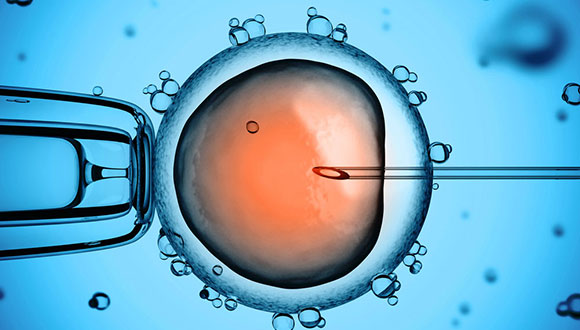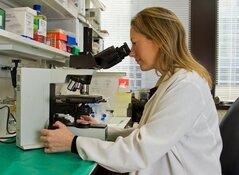The Life Sciences Report: What sets BriaCell Therapeutics Corp.'s (BCT:TSX.V) BriaVax apart from others in the field of immuno-oncology?
Dr. Charles Wiseman: Vaccine studies have been feasible for the past 75 to 100 years. The problem has been that vaccines produced sporadic responses, and we didn't have the tools to unlock the essence of the procedure. Today we have sophisticated tools, both for diagnosis and for manipulating the components to make vaccines. We are pleased to see the surge of immunotherapy companies that are developing a variety of interesting techniques, but what has us so excited at BriaCell is the fact that we've seen results unlike anything that I've ever seen in my 40-year career as an oncologist.
"We are a company with the right expertise, a razor-sharp focus and with an eye toward attainment of valuation milestones."—Dr. Joseph Wagner
Our initial program for BriaVax was designed as a safety trial in breast cancer, with six doses. Keep in mind that all the patients being tested were in the latest stages of cancer. Nevertheless, after three doses, we saw a substantial response. After six doses, we saw a 90–95% regression of the tumor. This is the first time I've seen an immunological therapy make cancers regress so rapidly. Of course, those results have to be further validated in the course of upcoming clinical trials, but to say that we are motivated to advance BriaVax would be an understatement .
TLSR: Your compound activates both the innate and adaptive immune systems and modulates the acute vascular inflammatory response. Why is this combination important in halting cancer?
Dr. Joseph Wagner: In the field of cancer immunotherapy, we are learning that to elicit an effective antitumor response—to coax the immune system to see a tumor and reject it—multiple layers of the immune system and of the host must be activated against the tumor. We still don't completely understand the mechanism of action, but we believe there are multiple components. The involvement of a vascular component was hinted at in one of the responding patients.
Analysis of imaging and biomarker expression suggests there may have been an acute response based on regression, seemingly an attack on the tumor's vascular system. Our compound may be starving the tumor of oxygen or nutrients, much like Avastin (bevacizumab). Such anti-angiogenesis inhibitors are an active area of development in cancer. This is conjecture, but there may be an element of avascularization of the tumor—starving the tumor—in addition to an immune-cell-mediated attack on the tumor. This is something we need to explore further in the clinic.
TLSR: In this compound, you combine an allogeneic breast tumor cell line, a transgenic granulocyte macrophage colony-stimulating factor (GM-CSF), cyclophosphamide (a chemotherapy drug) and an interferon boost. Why did you choose those components in particular?
CW: Let's talk a little history. In the 1980s, researchers thought administering a cell would be sufficient to elicit an immune response. Then studies indicated that the immune system might have brakes as well as gas pedals, and that low-dose cyclophosphamide would downregulate regulatory-type cells, suppressing the inhibitor. The use of low-dose cyclophosphamide has been applied to a great many vaccine studies. New immunologically active natural substances—interferon and interleukin, for example—were also developed.
"This is the first time I've seen an immunological therapy make cancers regress so rapidly."—Dr. Charles Wiseman
We decided that one injection of GM-CSF as a modulator might not be enough, so we genetically engineered the cell to release GM-CSF in a slow, constant flow at the site. GM-CSF is an extremely powerful, naturally occurring signal that the body makes to wake up the immune system.
Finally, we decided to administer interferon 48 and 96 hours after the initial dosage to give the immune system an additional wake-up call, causing it to detect antigens and generate an immune response. We think that's what we have effectively engendered with our program's multiple lines of attack.
TLSR: Is this only for HER2-positive breast cancer patients?
CW: Interestingly not. Our best responder, technically, didn't overexpress HER2. She did have HER2 on her cells, but it was not genetically overexpressed.
Our compound also has been used to treat one patient with ovarian cancer, but she manifested HER2. Our position with the FDA is that if we can show some other cancers overexpress HER2, and if we have a candidate who has an antigen that might be a target for the vaccine, our compound may be effective. We're just starting to look at other antigens as targets, too. Perhaps the vaccine and a lot of different cancer cells are sharing markers in common. If so, our construct would be applicable to those others.
TLSR: What is BriaCell's next milestone, and what do you need to do to reach it?
JW: Our next major milestone is to begin treating new patients. Originally, Dr. Wiseman and fee angel investors funded the early clinical trials. BriaCell Therapeutics was formed to provide professional management to advance the vaccine into more advanced clinical development. We've submitted an application to the FDA for approval to reactivate the program, and are manufacturing new lots of vaccine with a partner. Once those lots are approved by the FDA, we anticipate going into the clinic. We hope to begin enrolling a 24-patient study before the end of 2015.
"Our next major milestone is to begin treating new patients; we hope to begin enrolling a 24-patient study before the end of 2015."—Dr. Joseph Wagner
This study will be slightly different from the original study, where the protocol called for stopping treatment after a certain number of doses. Our new protocol gives us flexibility to continue treatment and, potentially, to enroll patients with other cancers based on their cancer antigen profiles.
TLSR: Will this be a multicenter or single facility trial?
JW: We'll start with a single site and may include additional sites later into the trial.
TLSR: Dr. Wagner, you were president and CEO of OncoCyte Corp. (a subsidiary of BioTime Inc. [BTX:NYSE.MKT]) before joining BriaCell. How does this experience help you guide BriaCell as it develops not only a cancer vaccine, but also a companion diagnostic?
JW: OncoCyte was focused on cancer diagnostic development. During the course of my four years leading the company, we conducted very large cancer diagnostic studies using cutting-edge technologies that evaluated thousands of biomarkers, so I've learned the value of companion diagnostics.
Cancer immunotherapy studies, historically, face a double-edged sword. Many studies have shown quite robust complete or near-complete responses, but often that success is experienced by fewer than 10% of patients. That's created an agonizing glimmer of hope, diluted by a lot of patients who haven't responded. Our goal is to determine the difference, prospectively, between a patient who will respond and a patient who cannot respond to a specific treatment.
Co-development of a companion diagnostic test would allow us to identify and segregate a potential responding population from a population of patients who would have no realistic hope of responding. That would be of huge value, both from the perspective of improving patient outcomes by bringing patients the right treatments, and also from the perspective of health economics. Immunotherapies are not inexpensive, small molecule treatments. Making them more effective by developing a test that increases the percentage of patients responding will be a win-win for physicians, patients and payers.
"We have formed a team capable of taking BriaCell through to the next level."—Dr. Saeid Babaei
Developing a companion diagnostic is very straightforward. The FDA opened a pathway recently to allow for co-approval of companion diagnostics and cancer therapeutic products. This is sort of a premarket and biologics license combination approval.
We've begun looking, retrospectively, at samples from patients Dr. Wiseman already has treated. The goal is to collect information regarding the antigens expressed on patients' tumors and measure various elements of immune system function.
By the time we reach a certain stage of clinical development, most likely during Phase 2b, we'll have a tremendous amount of data regarding responding and non-responding patients. We'll then derive an algorithm that determines a panel of biomarkers that will help us predict responding and non-responding populations. That data will then be applied as a test for our pivotal Phase 3 trials.
If you look at other companies, particularly in oncology, you'll see that a number of them have already announced partnerships to develop companion diagnostics. Illumina Inc. (ILMN:NASDAQ) and NanoString Technologies (NSTG:NASDAQ) are good examples of diagnostic companies that are working with drug developers to co-develop companion diagnostics. Often, interest in companion diagnostics has developed because of pressure from payers to improve the health economics of these very expensive therapies.
CW: Penicillin, for respiratory illnesses, offers a very clear analogy. Penicillin works terrifically for patients with pneumococcal pneumonia, but not for patients with viral pneumonia or tuberculosis. They need a different treatment. So, if you have a respiratory ward full of coughing people, giving penicillin would have a high failure rate. But, if you give it only to those who will benefit, you change the percentage.
A companion diagnostic, whatever the disease, lets physicians and drug developers focus on patients who have a chance of responding to therapy based on their biomarkers. We haven't identified the biomarkers for our compound yet, but we're looking.
TLSR: Your leadership team is primarily physicians and scientists. Is that usual in a biotech company at this stage?
Dr. Saeid Babaei: BriaCell started with a pure clinician scientist, Dr. Wiseman. When we formed BriaCell around his years of work, we were highly selective in choosing the people with the right scientific and clinical backgrounds, coupled with business and financial credentials, to manage a successful micro-cap biotech company. I believe we have formed a team capable of taking BriaCell through to the next level. Our current team is augmented by a group of consultants and advisers whom we can cost-effectively access without significantly increasing BriaCell's liability and cash burn.
CW: It takes all different skills for a company to come together. If it weren't for a very visionary biotech investor, Isaac Maresky, we'd be invisible. Isaac is a partner with Sunel Securities investment bank (private) and a director of our board. He is largely responsible for recognizing our potential and structuring BriaCell as it is today.
TLSR: Could Phase 2 success with the trials lead to an application for breakthrough therapy status with the FDA?
CW: It sure could, and we hope it will.
SB: Breakthrough therapy status is designed for drugs intended to treat a serious condition that have shown some preliminary clinical evidence that they may be a substantial improvement over available therapies on a clinically significant endpoint. It's distinct from the other three FDA special designations of "accelerated approval" and "prior-to-review," which began in 1992, and "fast track," which was established in 1997.
"A companion diagnostic test would allow us to identify a potential responding population from a population of patients who would have no realistic hope of responding." —Dr. Joseph Wagner
What makes the possibility of breakthrough therapy status particularly exciting for BriaCell is that, with that designation, the FDA works much more collaboratively with a company's senior managers. The FDA has provided a very intensive guidance on an efficient drug development plan. That commitment and guidance will be instrumental for any organization in terms of knowing exactly what the company needs to accomplish to get a product commercialized and approved.
If our preliminary clinical data achieves the kind of survival benefits observed in earlier clinical trials, we will most certainly apply for this designation. Of course, we will have to wait to see how fast this can be accomplished based on the upcoming clinical data.
TLSR: We touched on the importance of finances earlier. You had a US$15 million ($15M) valuation when the company went public, and currently have CA$1.9M (US$1.4M) cash on hand. Is that enough to reach the next milestone?
JW: The cash-on-hand figure is from our Q2/15 financials, filed with SEDAR. We believe we have enough capital on hand to initiate and get into our upcoming clinical study.
We're an early clinical-stage biotech company. We obviously need to raise additional capital to reach our milestones, particularly as we get into larger and larger clinical studies.
I'm a fundamentalist in terms of driving business, and I have reached critical milestones on less than a bootstrap in one of my prior companies, which was eventually acquired. I believe that if we can focus and execute, which we are doing, our valuation will increase, and we will raise additional capital through traditional means.
We will rely on equity financing and would strongly consider nondilutive financing. Once we begin the clinical study, we would be eligible for nondilutive California Institute of Regenerative Medicine (CIRM) funding. The U.S. National Institutes of Health provides Phase 2 SBIR (Small Business Innovation Research) grants, which can provide significant nondilutive funding. Of course, partnerships are another option. The deal flow is heavy in this space. We would consider, under the right terms, co-development or any sort of partnership deal with an immuno-oncology-focused big pharma or big biotech company.
To be a good fit, a partner would have either a development pipeline or a commercial infrastructure friendly to a cell-based product. Obviously, the company should be focused in oncology and have an existing sales force. There are several leading companies that are very actively pursuing products and programs much like ours.
TLSR: What should investors expect from your company moving forward?
JW: Investors should expect focus and execution. Specifically, we will focus on near-term clinical milestones that will increase our value, and on initiation of our clinical study before the end of 2015. We want to enroll patients rapidly. Our near-term goals are to enroll those 24 trial patients within the first 12 months, to advance our companion diagnostic to clinical development, to present the interim clinical data and to design a larger, blinded, placebo-controlled Phase 2b study with, potentially, a number of arms.
TLSR: Is there anything else you'd like to tell investors?
JW: We are a company with the right expertise, a razor-sharp focus and with an eye toward attainment of valuation milestones. We are lean and mean in terms of our cash burn and how we allocate our resources.
TLSR: Thank you all very much.
Joseph Wagner, Ph.D., president and CEO of BriaCell, has 15 years' experience in C-level positions in multiple biotech companies. He is the former and president and CEO of OncoCyte Corp., where he led development of three cancer diagnostic products that currently are in trials involving more than 2,000 patients. As president and CTO of Cell Targeting Inc., he was instrumental in its acquisition by BioTime Inc. He led the first allogeneic cell therapy program for heart disease as vice president of Neuronyx, in partnership with Johnson & Johnson. Throughout his career, he has raised more than $100M in capital in public, private and angel funding rounds, and more than $20M in nondilutive grant and collaborative funding.
Charles Wiseman, M.D., founder and CMO of BriaCell, pioneered the use of chemotherapy and has 45 years' experience in oncology. He has served as director of the immunotherapy lab at St. Vincent Medical Center in Los Angeles. At the University of Texas MD Anderson Hospital and Tumor Institute, he served as chief of the breast cancer basic research lab and as assistant professor in the department of molecular carcinogenesis and virology. He was acting chief of the division of oncology at White Memorial Medical Center in Los Angeles.
Saeid Babaei, Ph.D., chairman of BriaCell, holds executive positions in multiple biotech companies. He is CEO of AbCelex, which recently obtained investment from a top agtech/biotech venture capitalist, and was vice president of Lorus Therapeutics, where he was responsible for a large turnaround and the out-licensing of a Phase 3 cancer immuno-oncology program to a private equity firm. He was director of corporate development at Northern Therapeutics, which was successfully partnered to United Therapeutics.
Want to read more Life Sciences Report interviews like this? Sign up for our free e-newsletter, and you'll learn when new articles have been published. To see recent interviews with industry analysts and commentators, visit our Streetwise Interviews page.
DISCLOSURE:
1) Gail Dutton conducted this interview for Streetwise Reports LLC, publisher of The Gold Report, The Energy Report and The Life Sciences Report, and provides services to Streetwise Reports as an independent contractor. She owns, or her family owns, shares of the company mentioned in this interview: None.
2) BriaCell Therapeutics Corp. is a sponsor of Streetwise Reports.
3) Joseph Wagner, Charles Wiseman and Saeid Babaei had final approval of the content and are wholly responsible for the validity of the statements. Opinions expressed are the opinions of Joseph Wagner, Charles Wiseman and Saeid Babaei and not of Streetwise Reports or its officers.
4) The interview does not constitute investment advice. Each reader is encouraged to consult with his or her individual financial professional and any action a reader takes as a result of information presented here is his or her own responsibility. By opening this page, each reader accepts and agrees to Streetwise Reports' terms of use and full legal disclaimer.
5) From time to time, Streetwise Reports LLC and its directors, officers, employees or members of their families, as well as persons interviewed for articles and interviews on the site, may have a long or short position in securities mentioned. Directors, officers, employees or members of their families are prohibited from making purchases and/or sales of those securities in the open market or otherwise during the up-to-four-week interval from the time of the interview until after it publishes.







































